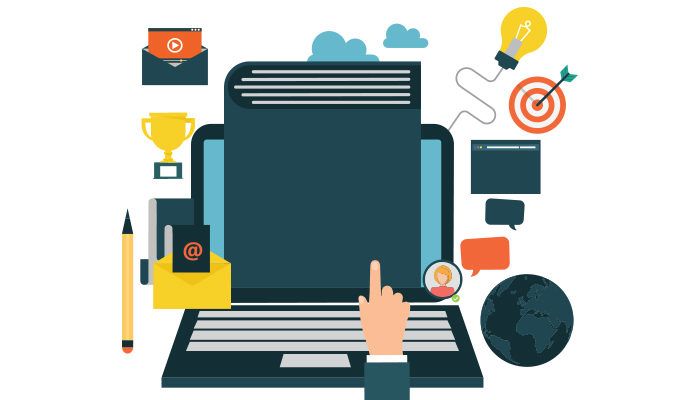The enterprise service desk is an important resource impacting businesses today. It garners global support, but what is it?
Quite simply, an enterprise service desk is an automated software that applies the principles of IT service management to industries where quality standards must be achieved to assure the needs of external customers are met. Enterprise service management is a tool for businesses focused on increasing quality and cutting costs.
In this article we will discuss the following:
- What is an “Enterprise Service Desk”?
- How it relates to information technology
- Industry examples of the enterprise service desk
If you want to learn about how the enterprise service desk can impact your business, stay tuned!
What is an “Enterprise Service Desk”?
The enterprise service desk defines a single point of contact resource that enterprise users can call on for many different solutions and outcomes. Companies around the globe are turning to enterprise services models to compete in a world where technology is simultaneous with instant gratification.
The biggest influencers of modern enterprise service desks are:
- A stable, innovative economy; and
- Evolving trends in IT service management (ITSM).
In a thriving economy, enterprise leaders look to optimize their business model, creating solutions that are faster, more reliable, and less expensive, allowing them to keep up with demand.
ITSM is a flexible service model from which the enterprise service desk approach evolved. The two work well together, and businesses already using ITSM within IT departments won’t have to learn an entirely new set of principles to understand the enterprise service desk. With a countless number of businesses already applying service management frameworks like ITIL, the enterprise service desk fits nicely into the company’s existing values and culture.
The enterprise service desk is being applied, globally, across a number of industries that must prioritize quality assurance to stay ahead. Some industries that benefit from an enterprise service desk are human resources, facilities management, and customer service.
We will give some examples of how these industries use the enterprise service desk below.
Enterprise Service Desk and IT
While not explicitly an IT resource, the enterprise service desk aligns with IT objectives and often requires IT support. Here are some of the ways the enterprise service desk overlaps with IT:
A Timeline of IT Service & Support
ITSM began in the 1970s. By the 80s, ITIL became the leading approach in IT service management. By the 2000s, a boom in enterprise technology was driving the digital transformation of enterprise businesses, and more companies found ITSM solutions, like ITIL, to be foundational resources.
Today, as businesses are now largely on the other side of digital transformation, the focus has shifted from morphing into a fully digital business to prioritizing cost and value. For that reason, the enterprise service desk offers the solution that value is achieved by high-quality support and service.
ITSM has been around for decades and outdates some fields that operate without formal service management models. The same cannot be said of other enterprise services such as HR, facilities, and myriad other enterprise functions that operate without a formal service management discipline. That’s why the enterprise service desk is so popular and effective, as it leverages ages of experience managing IT services and applies the same logic to other industries like facilities management and human resources.
What Role Does IT Play?
So, where does IT fit into all of this? Without ITSM, and more specifically ITIL, the practices guiding IT departments today wouldn’t exist. Without these practices, the enterprise service desk would never have been created. Almost everything that governs IT practice can be adapted to other departments to improve service levels.
For example, ITIL processes like incident, problem, and service management requests are usable in a number of industry scenarios. Standard operating procedures are other examples of IT principles that can be applied to a broad range of service industries to improve their service levels. Process flows, multi-channel support, self-help, and self-service—the list goes on.
It’s obvious why other industries would borrow these concepts from IT. It’s because IT is decades ahead of other industries when it comes to understanding and maintaining quality service management infrastructure.
Examples of Enterprise Service Desk in Business
There are a number of service industries that the enterprise service desk can help formalize. In this article, we’ll look at human resources, facilities management, and customer service.
Human Resources
Consider the many ways formal IT practices for service delivery can influence HR. One example is automating onboarding practices, like capturing W-4s, using enterprise service desk tools. Another way HR can benefit is by using enterprise service desk resources for electing benefits. Users could choose from an online catalog of benefits while making all elections through a user benefits portal.
Facilities Management
Facilities management is a discipline that focuses on space and infrastructure utilization and maintenance. Sometimes facilities management also includes green initiatives like recycling and being energy efficient. Facilities managers must stay focused on cutting operational costs without sacrificing quality standards.
Enter the enterprise service desk. These tools can make facilities management more efficient. For example, these tools have the capability to provide wikis for maintenance workers that answer basic questions that might otherwise hinder operations. Facilities management professionals can also deploy a ticket and escalation system, much like IT help desks have, using the same basic principles to improve facilities management quality and efficiency.
Customer Service
Cloud resources can be deployed in a sophisticated enterprise service desk that track customer purchases and encourage customers to give feedback, or offer quick and efficient issue resolution. Since IT service standards work well for internal customer service, it stands to reason they will translate well to customer service industries like retail.
Other Considerations
A number of questions may arise as you contemplate your adoption of an enterprise service desk resource. Like many of the frameworks we discuss here at BMC, there are few absolutes. Some companies may choose to appoint a Chief Service Officer and dedicated many resources to complete the transformation in a timely manner. Other companies may slowly transition over years, leaving the bulk of management and administration of the tool to IT or HR departments.
There’s no required organizational structure or timeframe. These things are wholly dependent on how aggressive each organization can be with their transformation.







